- Home
- J. K. Rowling
The Hogwarts Collection Page 10
The Hogwarts Collection Read online
Page 10
Said ‘Nick, if you please, will you get to your knees,’
And I turned to a gibbering wreck.
‘This may sting a bit’ said the cack-handed twit
As he swung the axe up in the air,
But oh the blunt blade! No difference it made,
My head was still definitely there.
The axeman he hacked and he whacked and he thwacked,
‘Won’t be too long’, he assured me,
But quick it was not, and the bone-headed clot
Took forty-five goes ’til he floored me.
And so I was dead, but my faithful old head
It never saw fit to desert me,
It still lingers on, that’s the end of my song,
And now, please applaud, or you’ll hurt me.
Nearly Headless Nick and Moaning Myrtle aren’t the only permanent residents of Hogwarts. The castle walls are lined with portraits whose subjects can move, speak and interact with students – including the Fat Lady, who guards the entrance to Gryffindor Tower, and the many previous headmasters who are more than ready to offer advice to their successors.
HOGWARTS PORTRAITS
BY J.K. ROWLING
Hogwarts portraits are able to talk and move around from picture to picture. They behave like their subjects. However, the degree to which they can interact with the people looking at them depends not on the skill of the painter, but on the power of the witch or wizard painted.
When a magical portrait is taken, the witch or wizard artist will naturally use enchantments to ensure that the painting will be able to move in the usual way. The portrait will be able to use some of the subject’s favourite phrases and imitate their general demeanour. Thus, Sir Cadogan’s portrait is forever challenging people to a fight, falling off its horse and behaving in a fairly unbalanced way, which is how the subject appeared to the poor wizard who had to paint him, while the portrait of the Fat Lady continues to indulge her love of good food, drink and tip-top security long after her living model passed away.
However, neither of these portraits would be capable of having a particularly in-depth discussion about more complex aspects of their lives: they are literally and metaphorically two-dimensional. They are only representations of the living subjects as seen by the artist.
Some magical portraits are capable of considerably more interaction with the living world. Traditionally, a headmaster or headmistress is painted before their death. Once the portrait is completed, the headmaster or headmistress in question keeps it under lock and key, regularly visiting it in its cupboard (if so desired) to teach it to act and behave exactly like themselves, and imparting all kinds of useful memories and pieces of knowledge that may then be shared through the centuries with their successors in office.
The depth of knowledge and insight contained in some of the headmasters’ and headmistresses’ portraits is unknown to any but the incumbents of the office and the few students who have realised, over the centuries, that the portraits’ apparent sleepiness when visitors arrive in the office is not necessarily genuine.
Perhaps the most outspoken portrait to grace the castle walls is Sir Cadogan, who Harry, Ron and Hermione encountered in their third year at Hogwarts. Often seen chasing after his fat pony, Sir Cadogan is a boastful knight who challenges passers-by to duels whenever he is given the opportunity. Legend has it that Sir Cadogan was as brash and brave in life as he appears to be in his portrait.
SIR CADOGAN
BY J.K. ROWLING
BIRTHDAY:
Unknown
WAND:
(According to legend) Blackthorn and troll whisker, nine inches, combustible
HOGWARTS HOUSE:
Gryffindor
SPECIAL ABILITIES:
Insane bravery
PARENTAGE:
Wizard father, witch mother
FAMILY:
Three wives are believed to have left him, rumoured to have had seventeen known children
Before the wizarding community was forced into hiding, it was not unusual for a wizard to live in the Muggle community and hold down what we would now think of as a Muggle job.
It is widely believed in wizarding circles that Sir Cadogan was one of the famous Knights of the Round Table, albeit a little-known one, and that he achieved this position through his friendship with Merlin. He has certainly been excised from all Muggle volumes of King Arthur’s story, but wizarding versions of the tales include Sir Cadogan alongside Sir Lancelot, Sir Bedivere and Sir Percivale. These tales reveal him to be hot-headed and peppery, and brave to the point of foolhardiness, but a good man in a corner.
Sir Cadogan’s most famous encounter was with the Wyvern of Wye, a dragonish creature that was terrorizing the West Country. At their first encounter, the beast ate Sir Cadogan’s handsome steed, bit his wand in half and melted his sword and visor. Unable to see through the steam rising from his melting helmet, Sir Cadogan barely escaped with his life. However, rather than running away, he staggered into a nearby meadow, grabbed a small, fat pony grazing there, leapt upon it and galloped back towards the wyvern with nothing but his broken wand in his hand, prepared to meet a valiant death. The creature lowered its fearsome head to swallow Sir Cadogan and the pony whole, but the splintered and misfiring wand pierced its tongue, igniting the gassy fumes rising from its stomach and causing the wyvern to explode.
Elderly witches and wizards still use the saying ‘I’ll take Cadogan’s pony’ to mean, ‘I’ll salvage the best I can from a tricky situation’.
Sir Cadogan’s portrait, which hangs on the seventh floor of Hogwarts Castle, shows him with the pony he rode forever more (which, understandably perhaps, never much liked him) and accurately depicts his hot temper, his love of a foolhardy challenge and his determination to beat the enemy, come what may.
Hogwarts is teeming with secrets. It seems from Harry’s explorations that every locked door and empty classroom conceals a rare magical object or fearsome monster of some kind. Let’s start with one of the most tempting but potentially devastating objects hidden in the grounds: the Mirror of Erised.
MIRROR OF ERISED
BY J.K. ROWLING
The Mirror of Erised is a very old device. Nobody knows who created it, or how it came to be at Hogwarts School. A succession of teachers have brought back interesting artefacts from their travels, so it might have arrived at the castle in this casual manner, either because the teacher knew how it worked and was intrigued by it, or because they did not understand it and wished to ask their colleagues’ opinions.
The Mirror of Erised is one of those magical artefacts that seems to have been created in a spirit of fun (whether innocent or malevolent is a matter of opinion), because while it is much more revealing than a normal mirror, it is interesting rather than useful. Only after Professor Dumbledore makes key modifications to the mirror (which has been languishing in the Room of Requirement for a century or so before he brings it out and puts it to work) does it become a superb hiding place, and the final test for the impure of heart.
The mirror’s inscription (‘erised stra ehru oyt ube cafru oyt on wohsi’) must be read backwards to show its true purpose.
Albus Dumbledore, who brings it out of hiding, puts it back where he found it when it has achieved his purpose in Philosopher’s Stone. We must conclude, therefore, that the mirror was destroyed, along with all the other contents of the Room of Requirement, during the Battle of Hogwarts.
J.K. Rowling’s thoughts
Albus Dumbledore’s words of caution to Harry when discussing the Mirror of Erised express my own views. The advice to ‘hold on to your dreams’ is all well and good, but there comes a point when holding on to your dreams becomes unhelpful and even unhealthy. Dumbledore knows that life can pass you by while you are clinging on to a wish that can never be – or ought never to be – fulfilled. Harry’s deepest yearning is for something impossib
le: the return of his parents. Desperately sad though it is that he has been deprived of his family, Dumbledore knows that to sit gazing on a vision of what he can never have, will only damage Harry. The mirror is bewitching and tantalising, but it does not necessarily bring happiness.
Dumbledore may have concealed what he truly saw when looking in the Mirror of Erised, but the Headmaster didn’t hide all of his memories. Over the years, the powerful Pensieve in the Headmaster’s office was used to let Harry explore Tom Riddle’s mysterious past, the Crouch family’s terrible history, and Slughorn’s greatest mistake. Like many items in the Headmaster’s office, a Pensieve is hard to come by and tricky to use.
PENSIEVE
BY J.K. ROWLING
A Pensieve is a wide and shallow dish made of metal or stone, often elaborately decorated or inlaid with precious stones, and carrying powerful and complex enchantments. Pensieves are rare, because only the most advanced wizards ever use them, and because the majority of wizardkind is afraid of doing so.
The perceived dangers of the Pensieve relate to its power over memory or thought. The Pensieve is enchanted to recreate memories so that they become re-liveable, taking every detail stored in the subconscious and recreating it faithfully, so that either the owner, or (and herein lies the danger) a second party, is able to enter the memories and move around within them. Inevitably, those with things to hide, those ashamed of their pasts, those eager to keep hold of their secrets, or protective of their privacy, will be wary of an object like the Pensieve.
Even more difficult than the recreation of memories is the use of a Pensieve to examine and sort thoughts and ideas, and very few wizards have the ability to do so. Albus Dumbledore is seen using the Hogwarts Pensieve in this way, notably in Chapter Thirty of Harry Potter and the Goblet of Fire, when he adds thoughts to the Pensieve and Harry’s face turns into Snape’s; Dumbledore is reminding himself of the hidden connection between Snape and Harry (that Snape was in love with Harry’s mother, and is now – though immensely grudgingly – honour-bound to protect him).
Traditionally, a witch or wizard’s Pensieve, like their wand, is buried with them, as it is considered an intensely personal artefact; any thoughts or memories left inside the Pensieve are likewise interred with their owner, unless he or she has requested otherwise. The Hogwarts Pensieve, however, belongs not to any individual but to the school. It has been used by a long line of headmasters and headmistresses, who have also left behind their life experience in the form of memories. This forms an invaluable library of reference for the headmaster or headmistress of the day.
The Hogwarts Pensieve is made of ornately carved stone and is engraved with modified Saxon runes, which mark it as an artefact of immense antiquity that pre-dates the creation of the school. One (unsubstantiated) legend says that the founders discovered the Pensieve half-buried in the ground on the very spot where they decided to erect their school.
The name ‘Pensieve’ is a homonym of ‘pensive’, meaning deeply, seriously thoughtful; but it also a pun, the ‘sieve’ part of the word alluding to the object’s function of sorting meanings from a mass of thoughts or memories.
If you wanted to explore the castle forever and ever, you’d need to get hold of the Philosopher’s Stone. Before it was destroyed, obviously. But did you know that the stone has a history outside the wizarding world?
THE PHILOSOPHER’S STONE
J.K. Rowling’s thoughts
I did not invent the concept of the Philosopher’s Stone, which is a legendary substance that was once believed to be real, and the true goal of alchemy.
The properties of ‘my’ Philosopher’s Stone conform to most of the attributes the ancients ascribed to it. The Stone was believed to turn base metals into gold, and also to produce the Elixir of Life, which could make you immortal. ‘Genuine’ alchemists – the forerunners of chemists and physicists – such as Sir Isaac Newton and (the real) Nicolas Flamel, sought, sometimes over lifetimes, to discover the secret of its creation.
The Stone is variously described as red and white in the many old texts in which it appears. These colours are important in most accounts of alchemy, and are often interpreted as having symbolic meaning.
The Philosopher’s Stone isn’t the only mysterious artefact to appear to Harry in his hour of need. The sword of Gryffindor was goblin-made and studded with rubies, and was once owned by Hogwarts founder Godric Gryffindor. It was the appearance of the sword that appeased Harry’s doubts as to whether he was a true Gryffindor or not – as Dumbledore pointed out, ‘Only a true Gryffindor could have pulled that out of the Hat, Harry.’
THE SWORD OF GRYFFINDOR
BY J.K. ROWLING
The sword of Gryffindor was made a thousand years ago by goblins, the magical world’s most skilled metalworkers, and is therefore enchanted. Fashioned from pure silver, it is inset with rubies, the stone that represents Gryffindor in the hour-glasses that count the house points at Hogwarts. Godric Gryffindor’s name is engraved just beneath the hilt.
The sword was made to Godric Gryffindor’s specifications by Ragnuk the First, finest of the goblin silversmiths, and therefore King (in goblin culture, the ruler does not work less than the others, but more skillfully). When it was finished, Ragnuk coveted it so much that he pretended that Gryffindor had stolen it from him, and sent minions to steal it back. Gryffindor defended himself with his wand, but did not kill his attackers. Instead he sent them back to their king bewitched, to deliver the threat that if he ever tried to steal from Gryffindor again, Gryffindor would unsheathe the sword against them all.
The goblin king took the threat seriously and left Gryffindor in possession of his rightful property, but remained resentful until he died. This was the foundation for the false legend of Gryffindor’s theft that persists, in some sections of the goblin community, to this day.
The question of why a wizard would need a sword, though often asked, is easily answered. In the days before the International Statute of Secrecy, when wizards mingled freely with Muggles, they would use swords to defend themselves just as often as wands. Indeed, it was considered unsporting to use a wand against a Muggle sword (which is not to say it was never done). Many gifted wizards were also accomplished duellists in the conventional sense, Gryffindor among them.
Much like a magic wand, the sword of Gryffindor appears to be almost sentient, responding to appeals for help by Gryffindor’s chosen successors; and, similar to a wand, part of its magic is that it imbibes that which strengthens it, which can then be used against enemies.
J.K. Rowling’s thoughts
There have been many enchanted swords in folklore. The Sword of Nuadu, part of the four legendary treasures of Tuatha Dé Danann, was invincible when drawn. Gryffindor’s sword owes something to the legend of Excalibur, the sword of King Arthur, which in some legends must be drawn from a stone by the rightful king. The idea of fitness to carry the sword is echoed in the sword of Gryffindor’s return to worthy members of its true owner’s house.
There is a further allusion to Excalibur emerging from the lake when Harry must dive into a frozen forest pool to retrieve the sword in Deathly Hallows (though the location of the sword was really due to a spiteful impulse of Snape’s to place it there), for in other versions of the legend, Excalibur was given to Arthur by the Lady of the Lake, and was returned to the lake when he died.
Within the magical world, physical possession is not necessarily a guarantee of ownership. This concept applies to the three Deathly Hallows, and also to Gryffindor’s sword.
I am interested in what happens when cultural beliefs collide. In the Harry Potter books, the most militant of the goblin race consider all goblin-made objects to be theirs by right, although a specific object might be made over to a wizard for his lifespan upon a payment of gold. Witches and wizards, like Muggles, believe that once payment has been made, the object belongs to them and their descendants or legatees
in perpetuity. This is a clash of values without a solution, because each side has a different concept of what is right. It therefore presents Harry with a difficult moral dilemma when Griphook demands the sword as payment for his services in Deathly Hallows.
Perhaps Hogwarts’ most enduring and sinister enigma is that of the Chamber of Secrets, a hidden area of the school created by the ambitious Hogwarts founder Salazar Slytherin. When Tom Riddle’s mysterious diary led Harry to discover the Chamber’s dark secrets in his second year, the legend was awakened once again. Although few have actually entered the subterranean chamber, its existence wasn’t kept entirely secret – after all, somebody had to adapt the hidden entrance once the school decided to build a bathroom on top of it.
THE CHAMBER OF SECRETS
BY J.K. ROWLING
The subterranean Chamber of Secrets was created by Salazar Slytherin without the knowledge of his three fellow founders of Hogwarts. The Chamber was, for many centuries, believed to be a myth; however, the fact that rumours of its existence persisted for so long reveals that Slytherin spoke of its creation and that others believed him, or else had been permitted, by him, to enter.
There is no doubt that each of the four founders sought to stamp their own mark upon the school of witchcraft and wizardry that they intended would be the finest in the world. It was agreed that each would construct their own houses, for example, choosing the location of common rooms and dormitories. However, only Slytherin went further, and built what was in effect a personal, secret headquarters within the school, accessible only by himself or by those he allowed to enter.

 Harry Potter and the Philosophers Stone
Harry Potter and the Philosophers Stone Harry Potter and the Chamber of Secrets
Harry Potter and the Chamber of Secrets Harry Potter and the Goblet of Fire
Harry Potter and the Goblet of Fire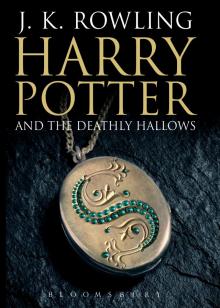 Harry Potter and the Deathly Hallows
Harry Potter and the Deathly Hallows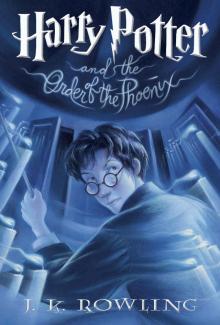 Harry Potter and the Order of the Phoenix
Harry Potter and the Order of the Phoenix Harry Potter and the Half-Blood Prince
Harry Potter and the Half-Blood Prince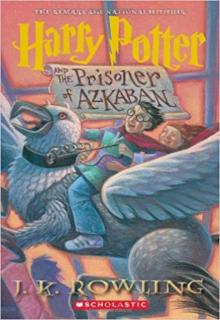 Harry Potter and the Prisoner of Azkaban
Harry Potter and the Prisoner of Azkaban Fantastic Beasts and Where to Find Them
Fantastic Beasts and Where to Find Them Short Stories from Hogwarts of Heroism, Hardship and Dangerous Hobbies
Short Stories from Hogwarts of Heroism, Hardship and Dangerous Hobbies Hogwarts: An Incomplete and Unreliable Guide
Hogwarts: An Incomplete and Unreliable Guide The Tales of Beedle the Bard
The Tales of Beedle the Bard The Casual Vacancy
The Casual Vacancy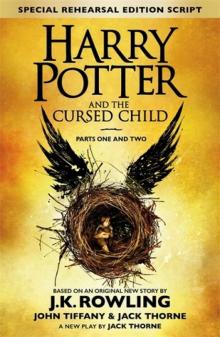 Harry Potter and the Cursed Child
Harry Potter and the Cursed Child Short Stories from Hogwarts of Power, Politics and Pesky Poltergeists
Short Stories from Hogwarts of Power, Politics and Pesky Poltergeists Quidditch Through the Ages
Quidditch Through the Ages The Ickabog
The Ickabog![Fantastic Beasts, The Crimes of Grindelwald [UK] Read online](http://i1.bookreadfree.com/i/03/19/fantastic_beasts_the_crimes_of_grindelwald_uk_preview.jpg) Fantastic Beasts, The Crimes of Grindelwald [UK]
Fantastic Beasts, The Crimes of Grindelwald [UK] Harry Potter and the Cursed Child: Parts One and Two
Harry Potter and the Cursed Child: Parts One and Two The Prisoner of Azkaban
The Prisoner of Azkaban Fantastic Beasts: The Crimes of Grindelwald
Fantastic Beasts: The Crimes of Grindelwald The Hogwarts Library Collection
The Hogwarts Library Collection Short Stories from Hogwarts of Heroism, Hardship and Dangerous Hobbies (Kindle Single) (Pottermore Presents)
Short Stories from Hogwarts of Heroism, Hardship and Dangerous Hobbies (Kindle Single) (Pottermore Presents) Harry Potter and the Deathly Hallows hp-7
Harry Potter and the Deathly Hallows hp-7 Hogwarts: An Incomplete and Unreliable Guide (Kindle Single) (Pottermore Presents)
Hogwarts: An Incomplete and Unreliable Guide (Kindle Single) (Pottermore Presents) Harry Potter and the Goblet of Fire hp-4
Harry Potter and the Goblet of Fire hp-4 The Christmas Pig
The Christmas Pig Harry Potter and the Sorcerer's Stone
Harry Potter and the Sorcerer's Stone The Order of the Phoenix
The Order of the Phoenix Harry Potter and the Prisoner of Azkaban hp-3
Harry Potter and the Prisoner of Azkaban hp-3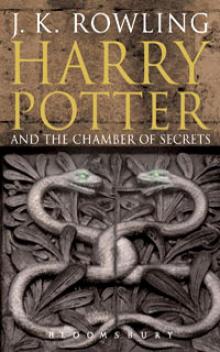 Harry Potter and the Chamber of Secrets hp-2
Harry Potter and the Chamber of Secrets hp-2 HP 3 - Harry Potter and the Prisoner of Azkaban
HP 3 - Harry Potter and the Prisoner of Azkaban The Half-Blood Prince
The Half-Blood Prince The Hogwarts Collection
The Hogwarts Collection Tales of Beedle the Bard
Tales of Beedle the Bard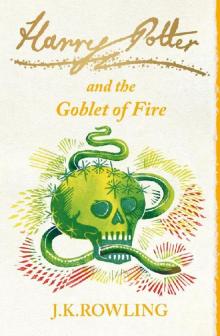 The Goblet of Fire
The Goblet of Fire Harry Potter and the Half-Blood Prince hp-6
Harry Potter and the Half-Blood Prince hp-6 Short Stories from Hogwarts of Power, Politics and Pesky Poltergeists (Kindle Single) (Pottermore Presents)
Short Stories from Hogwarts of Power, Politics and Pesky Poltergeists (Kindle Single) (Pottermore Presents) Harry Potter and the Sorcerer's Stone hp-1
Harry Potter and the Sorcerer's Stone hp-1